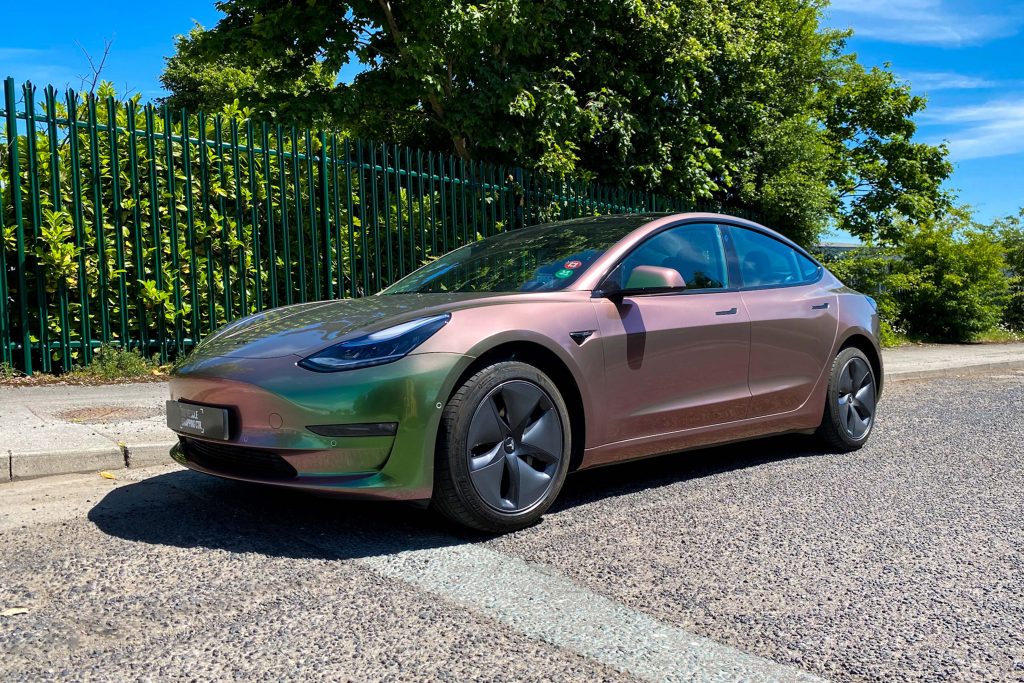The Ultimate Guide to Car Safety Systems
When you buy a car – or when you modify your car – safety and security are always high on the list of priorities. Owning a car is a significant investment, and keeping it safe not only protects that investment, but can also reap the reward of lower insurance premiums too.
Although vehicle security and safety are two slightly different things, they’re very closely related. In a sense, car security upgrades and modifications all help to keep your vehicle safe, in the same way that power steering, anti-lock brakes and airbags protect you when you drive it.
Let’s take a look at some of the most common car safety and security systems, and how they work to keep you and your vehicle protected whether you’re parked up, or out on the open road.
Immobiliser
A car immobiliser like Autowatch Ghost prevents the engine from starting until you enter a secret ‘pin number’ by activating a specific sequence of the vehicle’s dashboard controls.
This is primarily an anti-theft device, but it has benefits for safety too, as it will also prevent the kids (or anyone else) from starting the ignition while you’re loading up or defrosting the car, reducing the risk of a runaway vehicle.
Car Tracking
A car tracker like Cobra S5 or S7 can send a silent alarm if your vehicle is moved without one of the contactless driver cards detected within range.
Trackers can be combined with immobilisers, again preventing your vehicle from being driven by an unqualified individual, and improving your chances of recovering the car safely if it is stolen or towed away.

Anti-Lock Braking System
An anti-lock braking system, or ABS, prevents the tyres from skidding under heavy braking. During an emergency stop, this helps to ensure that your car stops in the shortest distance possible.
Stopping quickly in an emergency is a double win in terms of safety. It protects the driver and other occupants of the vehicle by reducing the chance of a collision, while also ensuring you’re less likely to hit bystanders, including pedestrians who unexpectedly enter the roadway ahead of you.
Electronic Stability Program
The Electronic Stability Program (ESP) is sometimes called Electronic Stability Control (ESC) or Dynamic Stability Control (DSC) depending on the vehicle manufacturer, but they all do essentially the same thing.
Vehicle ESP is an appropriate name, as it gives your car a kind of extra-sensory perception. Sensors in the wheels detect abnormalities in the spin and power of the tyres, which acts as an early warning of an impending skid. The car automatically responds to avoid the skid by adjusting the power and braking to the relevant wheel.
While ABS is almost universal on new vehicles, ESP is not quite yet, although it’s become very common. Up to 90% of the new car market is fitted with ESP as standard, especially in the premium segment.
Automatic Braking Assist
Assisted emergency braking works in addition to anti-lock brakes to stop your car even sooner. If you brake hard and suddenly, the vehicle can recognise this as an emergency stop and take over the process, applying the brakes fully, without skidding, and stopping safely in the shortest possible distance for the weather and road conditions.
Adaptive Cruise Control
The word ‘adaptive’ is important here. Whereas standard cruise control keeps your car moving at a constant speed – adapting to changes in road surface and minor inclines – adaptive cruise control factors in traffic conditions.
As a result, your car keeps a constant safe distance from the vehicle in front, even if it speeds up or slows down. Of course you still need to pay attention and be ready to brake, or to allow other traffic to merge from slip roads and adjacent lanes, but ACC can take a little of the mental load out of motorway driving over long distances.
Lane Departure Warning
Another useful safety system for motorway driving, a lane departure warning will sound if you veer across the white lines and can include audible alarms, visual indicators on the dash, or vibrations sent through the driver’s seat or steering wheel – importantly, this can be enough to wake you up if you’ve started to fall asleep during a night-time drive.
Lane departure warnings are quite clever, and will not sound if you are indicating, as this tells the vehicle that you intend to change lanes. Motorways and dual carriageways also have a kind of built-in version of this, in the form of the cats’ eyes which will vibrate your vehicle as you drive over them.

Automatic Headlights
Remembering to turn on your headlights at night is one of the most often overlooked rookie mistakes for newly qualified drivers, but equally it’s a significant safety risk for long-time motorists, and nobody is 100% immune to this one, especially when you start your journey in an area well lit by streetlamps.
Automatic headlights used to be a feature mainly of Volvo cars, but they’re now quite standard across all manufacturers. They can adjust to changing light levels at night, at dusk as the sun goes down, and even in the daytime if you enter a tunnel or the sun goes behind a cloud. All of this improves your visibility of the road ahead, as well as making your car more visible to other road users and pedestrians.
Road Sign Recognition
Finally, we’re heading into real Knight Rider territory with vehicles that are not only capable of spotting road signs you may have missed, but can actually tell what the sign says. Whether that’s a change in speed limit or a warning of an upcoming hazard, it helps you to stay safe by giving you a second pair of eyes when driving alone or distracted by something else around you.
This is like a scaled-down version of the AI that goes into fully self-driving cars, and it’s a great example of how giving the vehicle a limited amount of autonomy can have a big effect on the safety of the driver, passengers and bystanders.
Standard or Retrofit?
Before we end, a quick note on retrofitted safety and security systems. For the most part, insurers should appreciate anything you do to improve your vehicle’s safety, but a poorly installed aftermarket alarm or immobiliser could run the risk of voiding your insurance or warranty.
At the Vehicle Wrapping Centre, we are always careful to use respected, high-quality brand-name components, so that you can gain all of the benefits of aftermarket security and safety tech, while being confident that the only impact on your insurance policy will be an opportunity to negotiate cheaper car insurance premiums or a lower excess.
